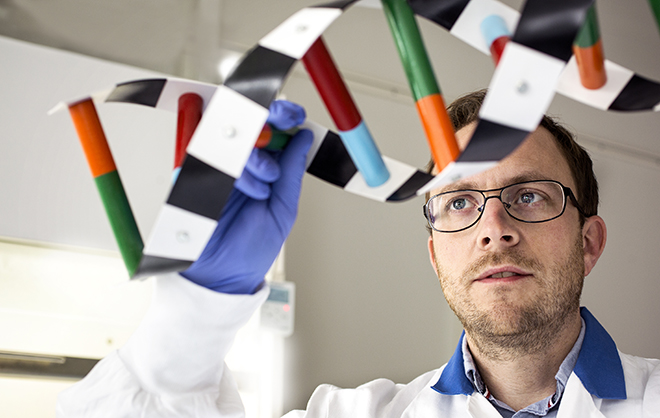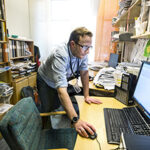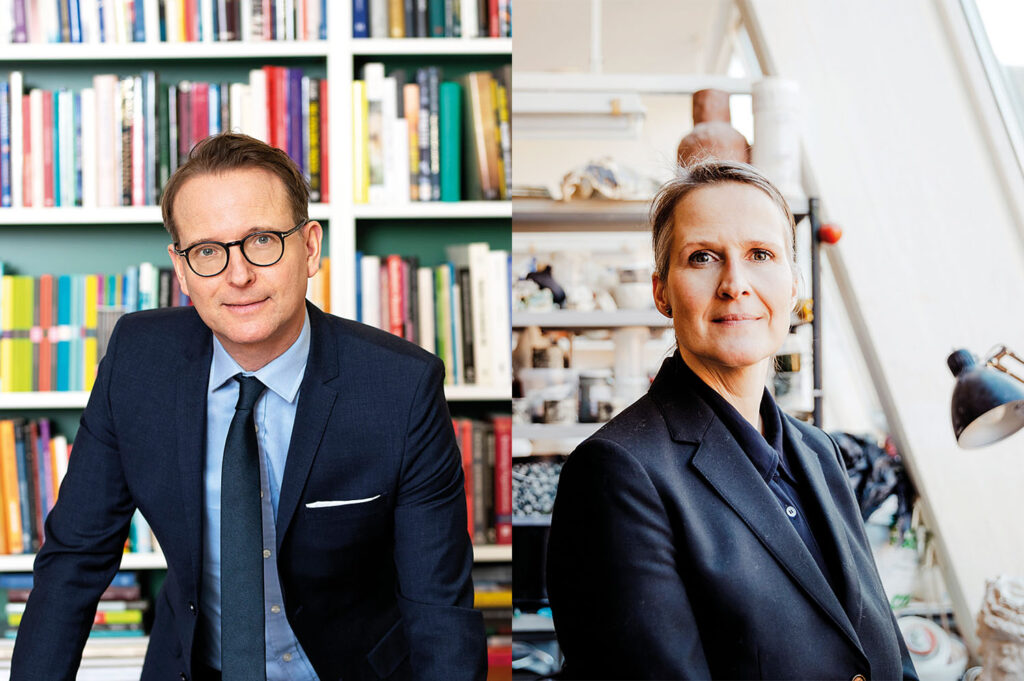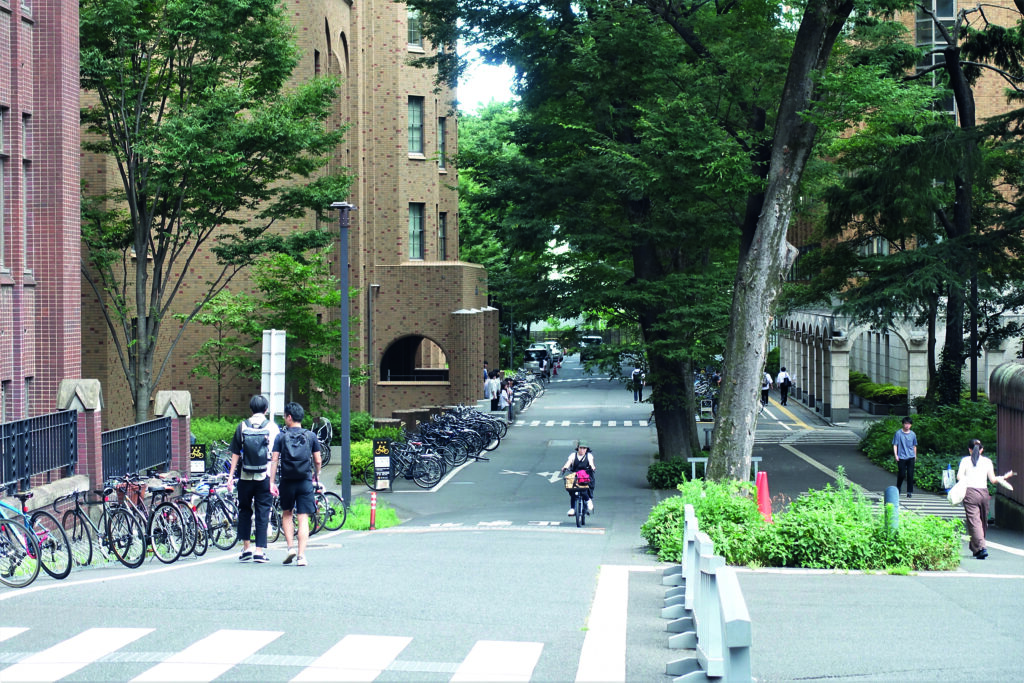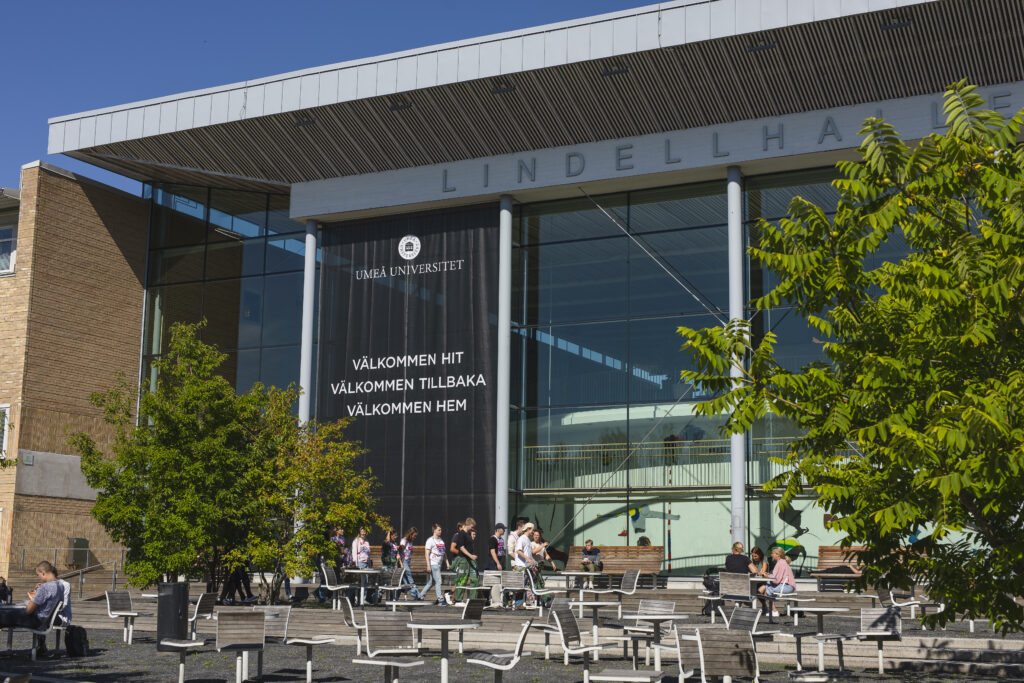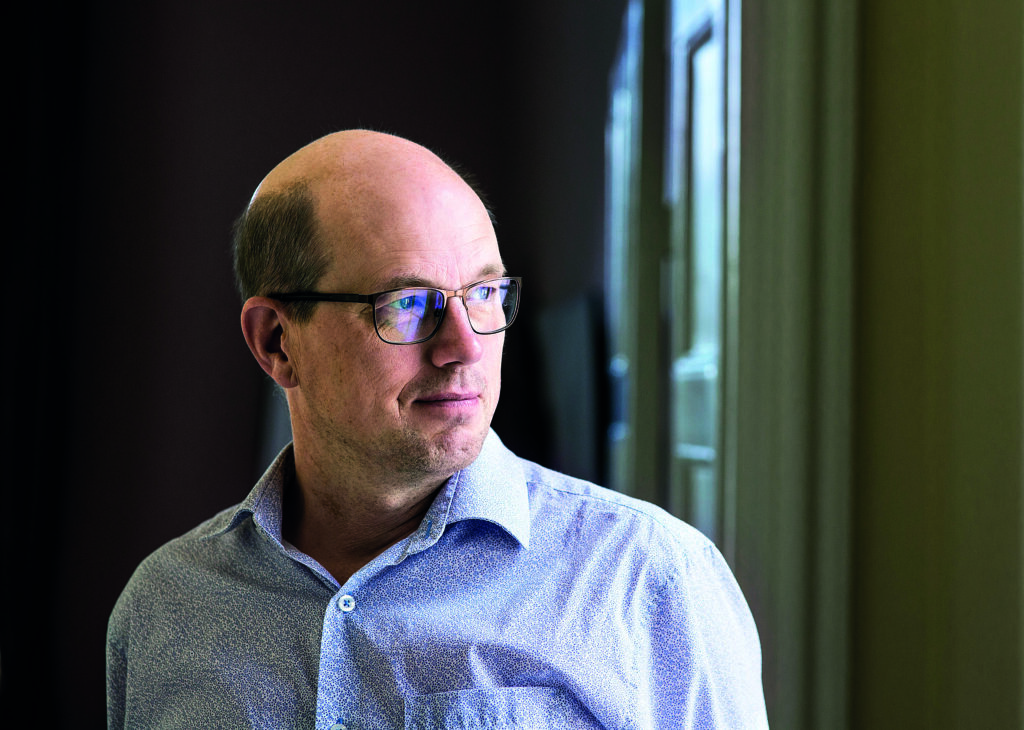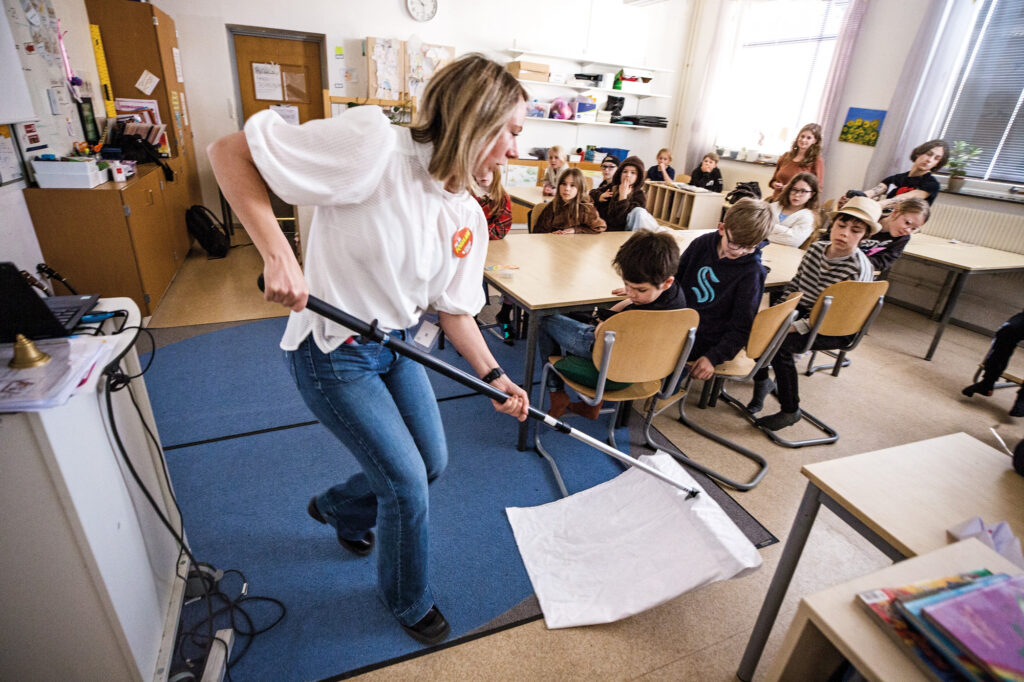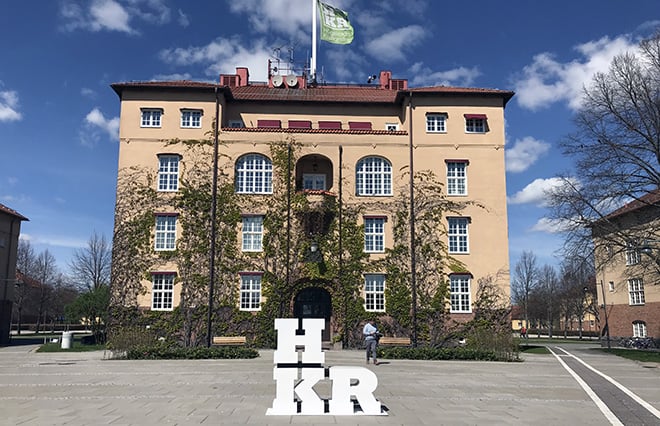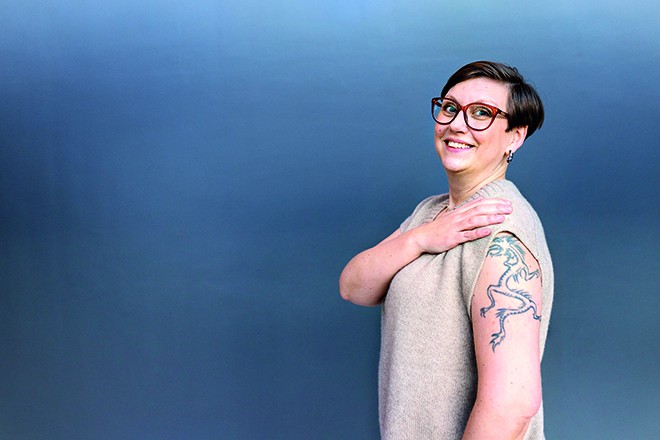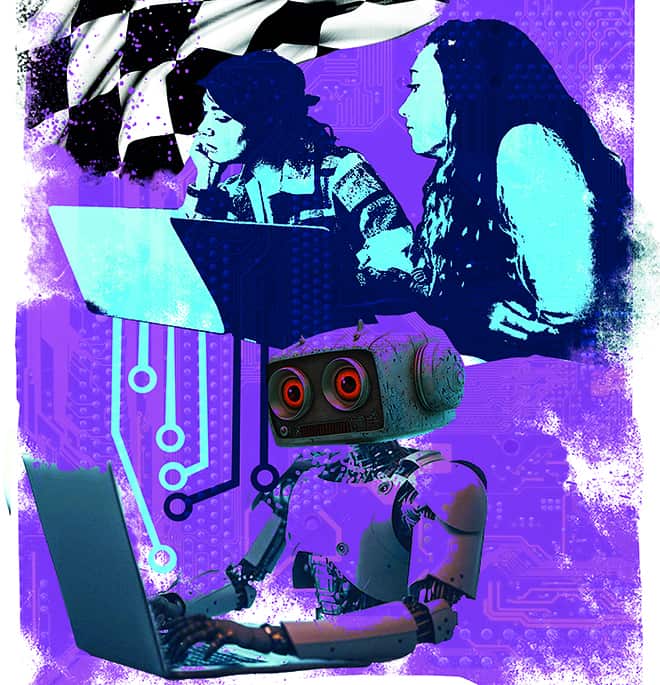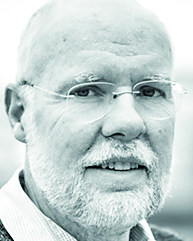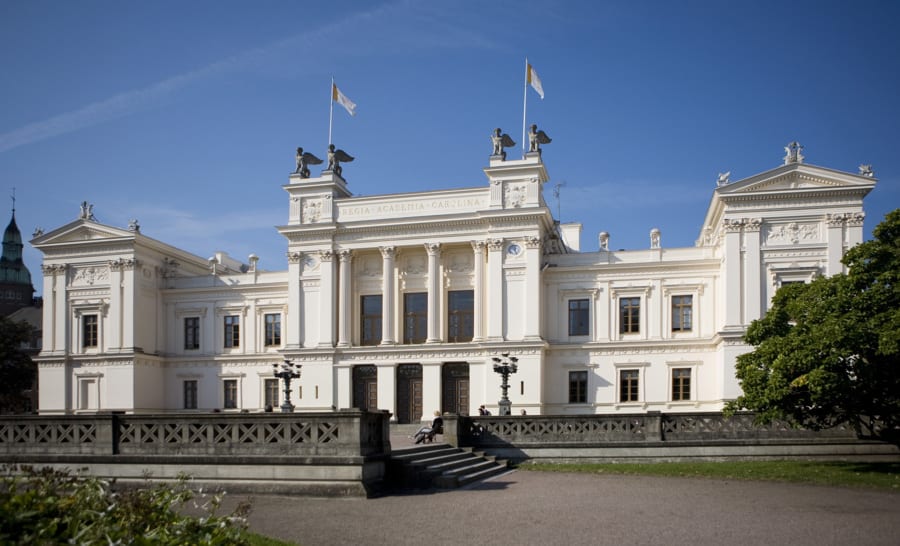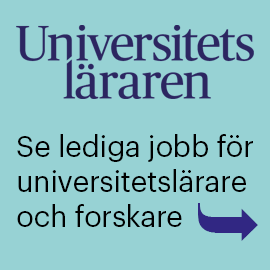Andreas Tillmar is puzzled. He stares at the screen and wonders if someone is playing a joke on him. The email he has just received appears to come from the police in the USA. It says that his DNA is a match that indicates that a distant relative of his is wanted in a murder investigation on the American west coast. An email like this would probably make anyone sceptical. If, like Tillmar, you are also currently working with the Swedish police to try to solve one of Sweden’s most highly publicised murder cases with the help of genetic research, the likelihood of receiving such an email conversation seems minimal.
“My first thought was that it was a journalist pretending to be a police officer in order to get information about the investigation,” he tells Universitetsläraren when we meet at the National Board of Forensic Medicine, RMV, in Linköping.
Adjunct senior lecturer
This has been the workplace of the researcher, forensic geneticist and molecular biologist Andreas Tillmar for 15 years. He began here as a doctoral candidate in a collaboration between RMV and Linköping University. After completing his PhD, he continued his research and also became an adjunct lecturer as part of his position at the agency, which means that his work also benefits the university.
“I share my research results within the university and give lectures,” he says. “It’s very beneficial, I think. A win-win situation.”
Tillmar’s main motivation is that his research will be used, which, to put it mildly, happened last year when his research method laid the foundation to finally clear up the double murder of an 8-year-old boy and a 56-year-old woman in central Linköping one October morning in 2004.
“Working on the double murder was extremely exciting,” says Tillmar. “Partly because I was living here in Linköping myself when the murders took place, so it is something that I have always been aware of since then. At the same time, there was a certain amount of pressure, of course, in case we didn’t succeed.”
It was in 2019 that the Police Authority asked for RMV’s help in their investigation. A working group was set up which, along with Andreas Tillmar, consisted of representatives from the police and the National Forensic Centre, as well as genealogist Peter Sjölund.
Hundreds of gigabytes of data
A year earlier, Tillmar had begun to develop a genealogy method to help the police solve another ”cold case”, known as the Ekeby Man, who was found murdered in 2003 and whom the police had never been able to identify. It was based on a model used in the USA, where the police had solved about 200 cases with the aid of genealogy, but as it had been developed in private labs that do not publish their data, he had to start from scratch.
Put very simply, the method involves conducting a whole genome analysis of DNA from the person you are trying to identify. The analyses are so extensive that RMV needs to use large external laboratories. Tillmar then maps the data to produce an expanded DNA profile, which he then uploads to genealogy databases. There, the genome is compared with DNA from people from all over the world. After that, the genealogist takes over.
“In the case of the Ekeby Man, I got back a giant file of 200 to 300 gigabytes of data consisting of tiny snippets of text that I put together to map the person’s entire genome,” says Tillmar.
He opens a program on his computer and shows a seemingly irregular pattern of the letters A, C, G and T in green, orange, blue and red. The entire genome consists of three trillion letters in those colours, and the key is the order in which they come, which determines things like the colour of a person’s eyes, he says.
Obstacles on the way to the solution
It took almost a year to map the Ekeby Man’s DNA. His identity has not been established yet, but the man’s origin has been traced to Croatia.
The same method was used in the case of the double murder, which is probably the first crime outside the United States to be solved with the help of genealogy. But they met plenty of obstacles along the way.
At first, the group only had access to a single genealogy database, which contained no close relatives of the killer. “Then I began to think that it must be someone who doesn’t come from around here. Or was it because the DNA is so damaged that it didn’t work? There were many such trial-and-error steps throughout the process, which was helpful but also frustrating.”
“That was when I realised that it was going to be solved”
There were legal obstacles too, not least because genetic data is sensitive personal information. “Even though I have given consent for my DNA profile to be used, my children and my parents have a very similar DNA profile, and they may not have given consent. After all, their genetic personal data is also being processed, so it’s a delicate and complicated matter, both ethically and legally.”
When all the permits had been granted, the group was given access to another database. This one gave the results they had hoped for.
“We’d arranged a meeting to log in and look at the list of results for the first time. It turned out that this individual had many relatives in the new database. That was when I realised that it was going to be solved.”
Genealogist Peter Sjölund took over and created a family tree, where the killer could eventually be identified. But Andreas Tillmar was still nervous. Even though he was sure that they had done everything right, there was still a worry that the sample might not be from the killer but from someone else who had simply passed by the scene of the crime.
“It was a relief when he confessed, and that the DNA was a match when he was swabbed. It would have been hard to take if the method had identified the wrong person. There would have been negative headlines in all the media, and we would never have been allowed to do it again.”
While Peter Sjölund has received a lot of publicity, Andreas Tillmar’s part in the solving the puzzle is not as well known. But he does not mind. “We civil servants are probably not as verbal or keen to be in the spotlight. We look on it more as the authority doing the work, even though it was I, an individual, who did it in this case. We don’t like to show off.”
No similar investigations have been started
Despite the success of the method, no more similar investigations have been started. Tillmar says that the Swedish Authority for Privacy Protection has prevented them. “They say that Swedish legislation does not allow data to be handled in this way, so now the whole method is on hold until, hopefully, the law has been changed. Otherwise, the idea was to get started on other cold cases this autumn,” he says.
In a broader perspective, there are also ethical issues with genetic research. Andreas Tillmar also works with something that could be described as biological eyewitnesses, which is based on a DNA test being able to determine what a person looks like, how old they are and where in the world they come from. He believes that precision in this area will improve so that researchers can reveal even more details, from just a bone fragment or a blood stain. But this rapid development also means that critics sometimes issue warnings and make comparisons with Nazi Germany’s human breeding programme.
“The legislators are of the opinion that you should not do certain things, even if you can, because it’s sensitive information. If you have done something, it’s difficult to turn back, and if another state or another leader comes along, it has already been developed. It’s important not to forget the lessons of history and think that that was a long time ago,” says Tillmar.
Helps the FBI
His genealogy research method has made waves abroad and led police from several countries to ask for help. “Right now, I’m helping the FBI with a historically interesting case. In the field of DNA, the FBI has an approach which uses well-known cases to develop methods using case studies.”
This collaboration has been helpful for Tillmar. “Publishing and showing that you are collaborating with the FBI has a huge impact, so it’s easier to apply for funding, get investment for research and build other collaborations that you may want to initiate yourself.”
“I gave them the parts of my family tree”
And speaking of the United States, what about that email about Andreas Tillmar’s distant relative? Yes, that turned out to be true. Now that Andreas Tillmar himself has been swabbed, his DNA is in the various databases. However, he does not know of any relatives who emigrated, so the United States has so far not received any expert help on that particular case.
“I gave them the parts of my family tree that I had found, and when I told them who I am, the police told me more about the case. But I don’t think they’ve solved it. I was promised a special state police mug if my information helped solve the case, so we’ll see if one turns up.”
